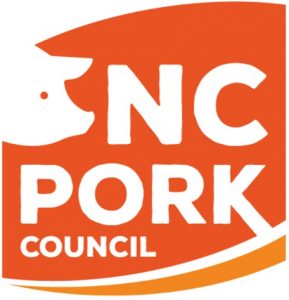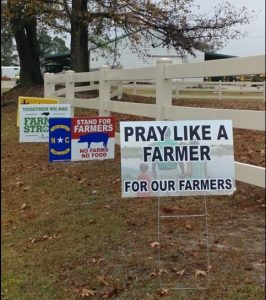
The News & Observer published a story on the front page of the Sunday paper, written by a freelance writer and directly funded by a policy advocacy organization, that is factually incorrect and dishonest.
The story is inaccurate on three counts:
- It gets facts wrong.
- It leaves out crucial information.
- It is funded directly by an advocacy influence campaign, which was not disclosed.
It is also part of a dangerous trend: advocacy disguised as journalism, bought and paid with hundreds of thousands of dollars to support stories that amplify a policy agenda against raising livestock for food.
This latest story is built around a central, purported fact: That there were only 33 public complaints against livestock operations in North Carolina from January 2008 to April 2018, while “over the same period, other hog states have registered literally thousands.”
The passage supporting that assertion says that the N.C. Department of Environmental Quality “located only 33 complaint records for a period of more than a decade… Other states with major livestock industries had far more: Nebraska provided 2,131 complaints; Georgia 5,652; and Texas 6,411. Iowa, the top hog producing state, provided 2,393.”
This is cast as evidence of a regulatory agency that isn’t doing its job. The editor of the story said as much after publication: “Why, we wondered, did North Carolina have so few complaints when others had so many more?”
They should have asked. Let’s explain.
Basis of the story is incorrect
The key fact in the whole tale – that the number of complaints in a decade was 33 – is not true.
The N.C. Department of Environmental Quality has actually reported acting upon much more, and the documents are reported annually to the General Assembly. (Find them online here, too.)
Those reports show that DEQ took action on a minimum of 474 complaints about livestock operations from July 2008 through June 2018, the decade-long period that parallels the one examined in the freelance story.
That’s at least 474 complaints, not 33.
But there’s another number that is just as necessary and much more important to understand: 24,551.
During that same time frame, North Carolina regulators conducted 24,551 on-site farm inspections specifically to ensure compliance with the many rules and regulations that are part of North Carolina’s robust inspection and enforcement system. This information is in those same reports – and is impossible to miss.
That system of inspections is in place in North Carolina as the result of bipartisan efforts to ensure environmental protections are upheld. The inspections occur at farms, all year, every year, so that farmers make sure they’re doing things right.
DEQ itself says that its North Carolina livestock regulation program is a national leader, “widely recognized as one of the most stringent in the nation and includes annual inspections, permitting, siting requirements, buffer requirements, record keeping and reporting and manure management.”
Those 24,551 inspections have most assuredly strengthened compliance with the state’s rules and regulations, and undoubtedly headed off the need for complaints.
Livestock farmers in North Carolina have embraced common-sense rules and regulations. They work hard every day to care for animals and the environment, to care for the communities where they live and operate, and to support the economy of North Carolina.
An inaccurate comparison
Now, what about those other “hog states” used for comparison? For starters, Texas, Nebraska and Georgia are not what folks in agriculture would call “hog states.”
Texas and Nebraska are No. 1 and No. 2 for cattle. Georgia is No. 1 in broilers – those are chickens.
Iowa is, by far, the nation’s leading producer of hogs and pigs – and it has three times as many hog farms as North Carolina. And, Iowa is also the nation’s leader in egg-laying hens.
To compare North Carolina with these states, without explaining the significant differences in farming scope, nor the regulations in place here, is nothing short of deceit.
Recent facts overlooked
The freelance writer then focused on a different comparison altogether: From November 2018 to April 2019, there have been 62 complaints against livestock agriculture “validated” by DEQ.
During those same six months, there was an even larger number of complaints – 76 – that were not considered valid. Why is that important? Farmers across the state have seen an uptick in frivolous complaints, part of a seemingly concerted campaign by extreme activists.
And what about those 62 “validated” complaints? Well, more than 50 of them involved poultry, cattle or horse operations. Most were about chickens.
That is, the overwhelming majority of validated complaints were not about hog farms.
And yet, amazingly, hog farms are the focus of the headline, the photographs, the text and the thrust of the story.
There are other concerns about the story, too many to detail. But it must be said, as one example, that we fiercely dispute allegations being made by activists, and parroted in the story, about demographics near farms and health claims. We provided direct, on-point rebuttals but they were not reported.
At this point, you must be asking: Why would a freelance writer veer so far off the mark to attack hog farmers in North Carolina?
The answer is because this wasn’t “free” at all.
Story is part of influence campaign
This story was sponsored and paid for as part of a defined effort to use the media in an influence campaign that is intended to damage livestock agriculture.
One of the “partners” in producing this story was the Guardian media outlet. But the funding wasn’t from the Guardian, its subscribers or advertisers.
The money for the story came from an $886,600 grant to the Guardian expressly to sponsor and publish anti-livestock stories from an animal liberation program that is under an entity with a pleasant, nondescript name, “Open Philanthropy Project.”
This direct-payment-to-the-media-influence-campaign has a stated purpose of seeking to affect “influential journalists, policymakers, and business leaders.”
The philanthropy has significant motives to advance an agenda that hurts livestock farmers: It has a substantial financial stake, as an investor in Impossible Foods, in efforts to accelerate development of “multiple food categories” that are based on plants, not livestock.
Another “partner” in producing the story was an entity called the Food and Environment Reporting Network (FERN), which also receives significant funding from groups opposed to livestock agriculture. One of FERN’s funders is simultaneously funding the Guardian as well. The FERN funder is also paying for a related effort to facilitate more lawsuits against livestock operations here and around the country.
Divisiveness is hurtful, disappointing
Farmers, and all fair-minded people, rightly abhor these kinds of divisive tactics, particularly based on misinformation campaigns. This is the sort of thing that reputable news outlets report on – instead of participating in.

Support for hog farms is visible across eastern North Carolina, despite advocacy attempts designed to harm.
When we were first contacted by the freelancer, he wrote that he had been “assigned” by his network to write a “North Carolina article” as a part of an already planned series of stories about “large animal operations across the country.” Even though it was apparent this activist-funded effort was rolling down the track, we provided responsive information in writing.
It is probably no surprise at this point that we were not asked about the specific details of what was published. It also seems to explain why the publishers refuse to correct the story’s most fundamental flaws – the numerator was wrong, the denominator was inaccurate, and the actual reason that explains the main question was left out. This, even after we pointed them directly to the records where they could see the true data with their own eyes.
The strategy by these outside funders is clever. They want to capture the media and, in turn, influence the public and policies. They know the media landscape is rapidly changing, and that recent shifts have especially hammered sources of revenue for traditional media. Deep-pocketed funders are now taking advantage.
Mainstream media outlets now seem desperate for revenue, even apparently from foundations and philanthropies with agendas.
That best explains why a media outlet like the News & Observer would accept and publish such a story – the N&O needs the free content from outside groups for the front page of the Sunday paper because so many true journalists have been laid off.
This erroneous story, and others like it, are harmful to farmers, to rural North Carolina, to real journalism – and to fair-minded people everywhere.
